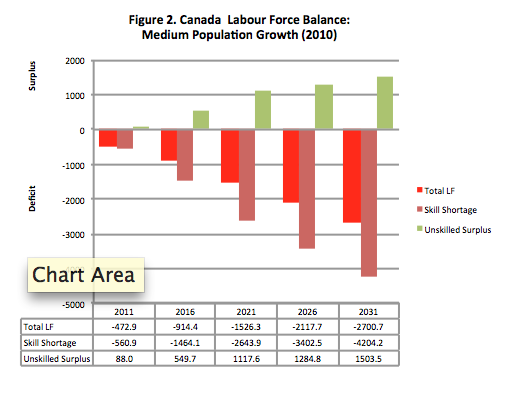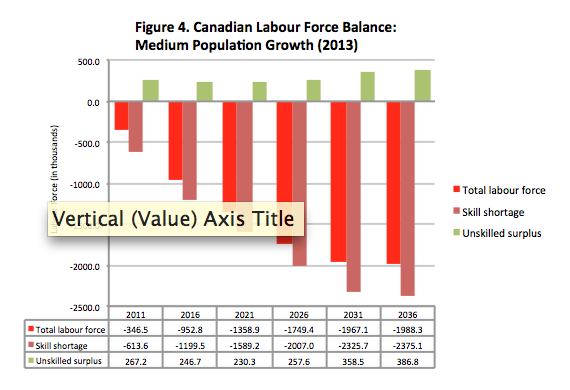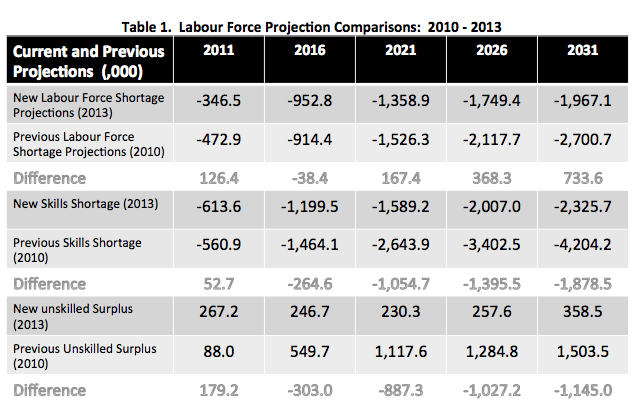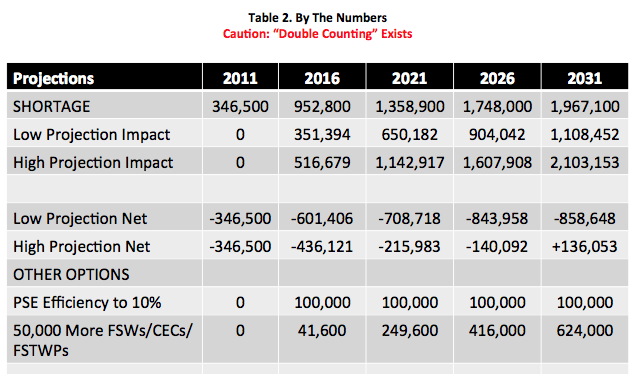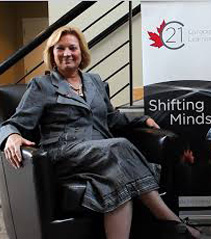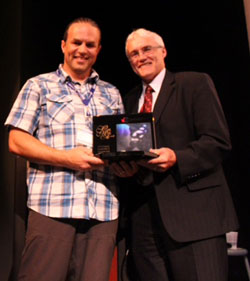
The Canadian Skills Mismatch: DEMOGRAPHIC IMPLICATIONS
By: Dr. Rick Miner on behalf of C21 Canada
INTRODUCTION
According to David Foot and Daniel Stoffman, two internationally renowned demographers, “Demographics explain about two-thirds of everything.” (Boom, Bust & Echo, page 2). Yet, in the case of Canada’s labour market future, one might reasonably push that estimate into the 80th percentile using the 2010 and 2012 reports published by Miner, in the People Without Jobs Jobs Without People series, as the basis for the change. These reports investigated the impact of the baby boomer generation exiting the workforce resulting in significant labour force shortages.
DEMOGRAPHIC PROFILE
Using Statistics Canada projections, Figure 1 provides a visual image of how Canada’s demographic profile will change as the number and proportion of the population 65 and older increases while the primary working age group (25-44) remains relatively stable.
LABOUR FORCE BALANCE 2010
Assuming our labour force size will need to increase in rough proportion to our overall population growth, we will soon experience significant labour force shortages resulting from the fact that retired baby boomers have significantly lower labour force participation rates, and, given current trends, will not be able to be replaced fast enough by members of the younger generations.
These earlier reports projected a Canadian labour force shortage of 2.7 million and a skills shortage of 4.2 million by 2031 (Figure 2).
CHANGES SINCE 2010
Since the publication of these reports a number of dramatic shifts have occurred that warrant a re-analysis of the earlier findings. While the ultimate impact of some changes may not be known for a while, it is worth considering their implications. The changes of most significant note are:
- Labour force participation rates for those 55 and older have increased (largely attributed to our recent economic difficulties).
- The Federal Government has established a number of new immigration programs (Canadian Experience Class, Foreign Skilled Trade Worker Program and the Foreign Skilled Worker Program) targeting younger immigrants who have employment skills and/or Canadian education and training specifically geared to our labour market needs which should increase their labour force participation rates.
- Labour Force demand projections have decreased.
- Recent Statistics Canada data, using 2011 census results, show Canada has achieved educational attainment levels higher than previously projected (Figure 3).
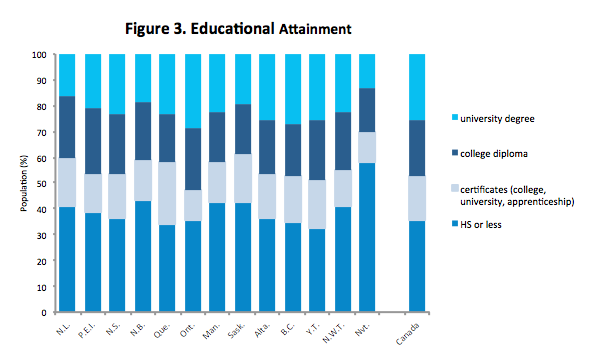 Proposed changes in retirement benefit provisions, moving eligibility from 65 to 67, should keep people in the work force longer.
Proposed changes in retirement benefit provisions, moving eligibility from 65 to 67, should keep people in the work force longer.
- New investments have been made in increasing the educational opportunities for aboriginals and persons with disabilities which should result in a larger and more skilled work force.
LABOUR FORCE BALANCE: A RE-ANALYSIS
Considering these changes and other more current information, a re-analysis of the data was completed and the results are shown in Figure 4. As can be seen, we still have both a labour and a skill shortage, but the situation has improved.
Table 1: Labour Force Projection Comparisons: 2010 -2013 provides a comparison between the earlier and this new data. The projected labour force shortages, skill shortages and projected increased levels of unemployment have improved. However, shortages still exist and they are far from trivial.
Rather than needing an additional 2.7 million workers by 2031 the shortage is now forecasted to be a little less than 2 million. Similarly, projected skills shortages drop significantly from 4.2 million to 2.3 million because of increased educational attainment levels. While the changes are encouraging, we must understand that we have major skill and labour force shortages forthcoming.
In fact, we have a two-headed problem to address in that we not only need more workers, but we need them to have the right skill sets. To increase the size of our work force, it is best to look for employment growth opportunities among those who have historically been under represented in the work force. These are immigrants, aboriginals, persons with disabilities, women, youth and older workers. Yet, we must be cognizant of the fact that these increases need to correspond to areas where skill shortages exist not in areas where there is a surplus. It was earlier assumed that simply having an educational attainment level beyond high school would be sufficient to meet businesses skill requirements. However, as will be discussed later, this assumption was far too simplistic, and will not resolve the skills mismatch problem that does and will exist.
SKILLS MISMATCH
While the debate over the existence or non-existence of a skills mismatch (skills shortage) is taking on epic proportions, many are asking a far too simplistic question (Do supply-demand mismatches currently exist?). Those on the “yes side” include IBM, Canadian Chamber of Commerce, CIBC, a majority of the sector councils, and Engineers Canada to name a few. They support their position by providing estimates showing large projected labour shortages that far exceed existing supply.
Those on the “no side”, tend to concentrate on existing economic data looking at unemployment rates compared to job vacancy rates that show significantly fewer vacancies than those who are unemployed. The assumption here is that if there were shortages then the number of job vacancies would be significantly higher, in proportional terms, to the number of unemployed. Alternatively, they look at occupations in high demand and determine the extent to which wages have increased using the hypothesis that large wage growth indicates a labour shortage (law of supply and demand). While there has been some wage growth in high demand areas the numbers have not been huge. Both approaches are fairly classical economic analysis techniques. Using them one could conclude that there is not now a labour/skills shortage.
It is less clear that these two economic approaches are able to get at the dynamics of our labour market situation for the following reasons. First, the orientation is focused more on the here and now and less so on the future. As has been shown earlier in this report (Table 1), we have experienced some short term labour force relief but our demographic reality will get progressively worse as more and more baby boomers enter retirement.
Second, a here and now analysis must consider the significant increase in the entry of temporary foreign workers to Canada, reported to be over 300,000 in 2012, which, in part, masks the labour shortage. Third, the Labour Force Participation Rate of workers 55 and older has increased which lowers the labour force shortage, which is good, but they will not stay in the work force “indefinitely”, and this reality must be considered.
Given the shortage projections provided by industry and the results of this analysis, one is inclined to accept that in 2011 there was not a major labour shortage but now (2013) one exists and evidence shows that the situation will get progressively worse. In fact, we actually have multiple skill mismatches.
These are
- Supply-demand mismatches which tends to be the focus of the current debate.
- A geographical mismatch (skills in the wrong place) which is becoming increasingly evident as mega projects emerge (oil sands in Alberta, LNG terminals in Northern BC, mine expansions in BC, the Yukon and Ontario, natural resource projects in Manitoba and Saskatchewan, energy projects in Labrador and Quebec, ship building in Vancouver, Halifax and Montreal, and an Eastern pipeline headed to Saint John, NB).
- An underemployment (over skilled) reality particularly among our youth. A recent study by the Certified General Accounts of Canada found that 24.5% of recent university graduates were underemployed. A similar study in the United States found the rate to be 48%.
- Finally, we have another mismatch where the skills of the workers are less than those required of their positions (under skilled/overemployment).
So, in reality, we have multiple mismatches requiring a variety of solutions. First and foremost, we need to increase the overall size of our work force. To do this, as mentioned previously but worth repeating, we need to concentrate our efforts on increasing Labour Force Participations Rates (LFPRs) among under represented groups. Using a “what if analysis”, fully detailed in a forthcoming report by Miner (The Great Canadian Skills Mismatch: People Without Jobs Jobs Without People and MORE), Table 2: By the Numbers shows that with even modest levels of growth in each designated group, we could add another 1.1 million people to the work force by 2031 thus reduction our labour shortage to 858 thousand.
To achieve this would necessitate success in implementing the new immigration programs, improving aboriginal LFPRs to the national average by 2031, reducing the LFPR gap for persons with disabilities by 25% by 2031, reducing the female LFPR gap by 50% by 2031, achieving LFPRs for older workers equal to the current United States averages by 2026, and improving post-secondary efficiencies by 5% by 2016.
The labour force shortfall could be reduced to almost a breakeven point if we were to increase our immigration quota by 50,000, concentrating on younger better skilled workers.
Table 2: By the Numbers also shows the impact of more aggressive objectives in each area of interest. Admittedly these changes will not be automatic and will require some investments, but we need to make them or the consequences will be dire.
RECOMMENDATIONS
So our numerical shortage is solvable but we still need to avoid the skills mismatches by having more of the right people with the right skills in the right place at the right time. To do this, to get the right skill matches, we need to make a number of significant changes. Of particular note are the following:
- We need to drastically improve our Labour Market Information System. The movement to the National Household Survey appears to have had a negative effect on the validity of our data given the significantly lower response rate (68% to 93%). Even without this problem, we face poor educational achievement data which makes it impossible to accurately tie educational attainment to economic outcomes. This makes it difficult to know what resources we have available and how much we need.
- We need a national education and training strategy. To assume that all provinces will engage in educational and training initiatives that are in the best interest of the country is somewhere between naïve and simplistic. The original federal-provincial agreement around educational responsibilities in 1867 had little to do with the value of post-secondary education but rather the role of religion. Being the only G-7 country without a national education strategy should be instructive.
- Career Counselling, assuming we have some good data to convey, should be “mandatory” for all high school students (perhaps even earlier), their parents, teachers and administrators. In addition, it should be used and widely available at colleges, universities and polytechnics.
A variety of college, polytechnic and university changes need to occur. Of particular note are:
1) An increase in coop and intern positions,
2) a restructuring of academic programs such that the applied portion of the program occurs at the end.
3) Redesigning programs so students can delay their specialization (concentration/major) as long as possible to better align their studies to labour market demands.
4) Increase college/polytechnic enrolments by “redirecting” university enrolments to better align the educational/training requirements projected in the future.
5) The establishment of more joint university-college programs with the applied (college/polytechnic) portion of the program occurring at the end.
6) Dissuade enrolment in programs that have limited employment potential given existing labour force demand projections.
7) Grow apprenticeship programs and enrolments.
Business need to get off the sidelines and become more active participants in the whole area of education and training. Aside from supporting more coop and intern opportunities, they need to:
1) provide targeted financial support in areas where they expect increased job growth.
2) Improve hiring practices concentrating more on competencies than credentials.
3) Begin expanding on-the-job training programs to help individuals transition from school to work.
4) Be more forthcoming about actual and anticipated job growth. It is recognized this may require some form of confidential “disclosure” to improve data validity.
Governments, aside from also being an employer, also have a critical role to play. They need to:
1) disproportionally invest in PSE institutions that are providing the educational/training needed for the economy to expand,
2) “force” institutions to realign the balance between their research and teaching mandates which now , disproportionally, favour research,
3) work with educational institutions to help the public better understand that we do not have an educational hierarchy but rather complementary educational systems that provide different but equally valuable educational/training outcomes, and
4) finally, invest in significantly better LMI systems both nationally and provincially.
Space limits a full discussion of the geographical and under/over employment mismatches but most of the solutions, except for some unique geographical challenges, are covered by variations of the suggestions made to address the supply-demand mismatch. A fuller discussion of all options can be found in the forthcoming report.
CONCLUSION
In conclusion, demographic changes, along with increased skill requirements, are the origin of our current and future labour force problems. We will need to BOTH increase the size of our workforce and also insure that we avoid a skills mismatch by aligning our educational attainments to the work force needs that will arise.
While a number of possible solutions have been proposed, it will ultimately require a concerted and cooperative effort between business, government and educational institutions to address and resolve these problems. Resistance to change will be encountered but a solution to these problems will give Canada a significant economic and social advantage as more and more baby boomers enter retirement.
The OPSBA VISION FOR LEARNING
By John Kershaw, President of C21 Canada, and the former Deputy Minister of Education for New Brunswick
Today’s C21 Canada’s spotlight is on the Ontario Public School Board Association. And in this context C21 Canada celebrates OPSBA’s contribution to the 21st century learning movement in Canada with an enthusiastic high five!
The OPSBA released their inspiring new document Vision for Learning and Teaching in a Digital Age http://www.opsba.org/files/OPSBA_AVisionForLearning.pdf. The OPSBA document is a testament to progressive thinking and a welcome contribution to the call for 21st century models of learning in public education in Canada. The fact that a key education leader in Canada’s largest province is actively engaging on the need for 21st century competencies and technology rich learning environments in public education can only be seen as positive to Canada’s 21st century learning movement.
The OPSBA’s new document is a call for change to position Ontario’s learners in the digital age. Rather than paraphrase the OPSBA latest document we highlight a few key passages that capture the essence of the OPSBA message on what must change.
Our Vision… requires a purposeful cultural shift in our education system that focuses on engaging and inspiring our students, that fosters creative and innovative minds and embraces the enabling role of technology on expanding how, when and where learning takes place.
The new role of education is to ensure all students have the opportunity to use their interests and passions to connect to all areas of knowledge.
The challenge for schools is to be open to adapting to and adopting the technology used by students. It represents a relevant way to empower students and engage them in taking responsibility for their own learning. It leads to building relationships in the classroom as the teacher engages with the students about the skills they bring, helps students refine those skills and encourages students to make productive and relevant use of technology in their everyday lives.
The document’s specific recommendations are high level and set the stage for real action on the path to transforming Ontario’s public education system to the reality of the knowledge and digital era.
The OPSBA vision statement is not just an important contribution to the future design of Ontario’s public education system; it is a complementary call for national action to C21 Canada’s own Shifting Minds vision and framework for change (see www.c21canada.org).
The authors are to be congratulated for a visionary document; the OPSBA is to be praised for endorsing and championing the vision; and the Ontario government will hopefully embrace the call for change on an urgent basis. The good news is that Ontario boasts many excellent examples of innovation in schools and in classrooms, and in a few instances at the district level itself. The challenge is to accelerate the pace of making these innovations systemic and transforming education to be innovative by design. Public education in Canada is rooted in the agrarian and industrial age and in today’s innovation driven society and economy we need an education system where innovation is celebrated, nurtured and rewarded.
A final word from the authors of the document: The challenge to be overcome is ensuring the readiness of our students to take their place in a world of rapid technological change and increased globalization. We need to start with an articulate Vision that will engage all our educators, all our learners, all our parents and all our communities.
Our collective and fervent wish is that one day soon the Ontario Ministry of Education and CMEC Ministers collectively issue a similar statement.
C21 Canada Comments on International PIAAC Report
Toronto, Ontario CANADA, Tuesday, October 8, 2013: Today’s release of an international survey on adult competencies in the 21st century is a wake-up call for Canadians. Although Canada scored well relative to many participating countries, Canada is not in the top group of performing nations.
The Programme for the International Assessment of Adult Competencies (PIAAC) was conducted by the OECD and focused on three primary areas of adult competency (ages 16 to 65): literacy, numeracy and digital literacy. The specific findings can be found on the website of the Council of Ministers of Education Canada (CMEC) at http://www.cmec.ca/. CMEC is comprised of Ministers responsible for learning, skills and labour development and provinces are the constitutional lead for education in Canada.
The Honourable Jeff Johnson, Minister of Alberta Education inherited the Chair of CMEC a mere week ago. In a meeting today with education and industry stakeholders he listened carefully to the opportunities and challenges identified as a result of the PIAAC findings. “He is clearly a leader who is focused on moving the 21st century learning agenda ahead in Canada, in partnership and collaboration with all stakeholders.” says John Kershaw, President, C21 Canada. The fact that C21 Canada was invited to a special briefing session with Minister on the PIAAC findings speaks well to his interest in reaching out to groups and organizations who are actively engaged in and supportive of the call for changes in Canada’s learning systems.
Although the real work of deciphering the data from the OECD survey now begins, the key messages C21 Canada takes away from the PIAAC findings and the Ministers briefing session this morning include:
1) Although Canada’s ranking is relatively positive, we have much work to do to position Canadians with the competencies they need for success in the 21st century;
2) Canada is not in the top group of performing nations, and there is wide regional variation in performance across the country.
3) There is a direct link between highly skilled people with 21st competencies and future economic prosperity and social progress;
4) CMEC and Minister Johnson are committed to leading a national discussion on how to ensure Canadians achieve the competencies they need for success and will be model collaborators in this process;
5) OECD’s PISA results, to be released December, will continue to fuel the national discussion on learning and skills development;
6) The call for change is emanating from many quarters, both internationally (OECD) and nationally (Equinox Summit in Waterloo http://wgsi.org/).
C21 Canada advised Minister Johnson and CMEC officials that our organization is committed to supporting their efforts to convene educators, business leaders and other societal stakeholders and promote a national dialogue on the need for 21st century models of learning and skills development in Canada.
About C21 Canada
C21 Canada is a unique blend of national education associations and knowledge sector businesses united in their belief that 21st century models of learning must be adopted in public education on an
urgent basis to position Canadians for economic, social and personal success in the high skills, knowledge and innovation based economy.www.c21canada.org
C21 Canada Founding Members: Canadian Education Association, Calgary Board of Education, Canadian School Boards Association, Dell, EF Educational Tours, IBM, Microsoft, Nelson Education, Oxford University Press, Pearson, Scholastic Education, SMART Technologies.
Secretariat: 21st Century Learning Associates, MindShare Learning
For media inquiries, please contact:
John Kershaw, President, C21 Canada
Phone: (506) 470-4985
E-mail: John.Kershaw@c21canada.org
Website: www.c21canada.org
Robert Martellacci, Vice-President, C21 Canada
Phone: (416) 569-2106
E-mail: Robert.Martellacci@c21canada.org
Website: www.c21canada.org
C21 Welcomes New Member and Sponsor
As a part of the C21 mission to expand its national network we are pleased to announce our newest board member Naomi Johnson, Calgary Board of Education’s Chief Superintendent of Schools.
We would like to thank Warren Jestin, Senior Vice-President & Chief Economist at Scotiabank, for generously sponsoring and supporting C21 Canada.
From left to right: Naomi Johnson, Calgary Board of Education’s Chief Superintendent of Schools
Warren Jestin, Senior Vice-President & Chief Economist at Scotiabank
Chris Whittaker Receives Shifting Minds Award
On June 11, 2013 C21 Canada presented Chris Whittaker of Dawson College with a Shifting Minds National Award for distinctive achievement in the field of 21st Century learning and innovation. C21 Canada’s Shifting Minds awards are presented to recognize the work of individuals and organizations in advancing 21st century models of learning in Canada consistent with C21 Canada’s vision and framework document, Shifting Minds (see wwww.c21canada.org). In presenting the award, C21 Canada’s President John Kershaw highlighted Chris Whittaker’s accomplishments in advancing 21st century models of learning and teaching in the field of physics, through the pursuit of creative and student-centred pedagogies and the design of innovative learning environments. The award was presented at the SALTISE conference at Dawson College, in front of a number of Chris Whittaker’s colleagues and peers.
Chris has been a physics teacher at Dawson College for over 15 years. According to his colleagues, what makes Chris special are 4 distinctive qualities:
- His ongoing efforts to improve his students’ learning.
- His continuing commitment to improving his teaching practice.
- His commitment to advance the field of physics education through research and innovation.
- His mentoring activities related to his colleagues.
The focus of Chris’s teaching is the creation of appropriate learning activities and environments. He designs activities to engage students from both a conceptual and problem solving perspective. He develops learning activities that keep the individual student in mind while leveraging the benefits of collaborative engagement of peers. He leaves room for his students to have fun and see the beauty in learning physics. His students say that by sharing his many personal experiences he makes his teaching meaningful to them while also making him more approachable.
Perhaps the most important testimonials come from Chris’s students:
- Chris cares that you do well as an individual. That you do well and succeed for yourself. He wants you to improve. It’s… the best feeling [for a student].
- Chris cares whether I pass or fail … He wants us to succeed as students. He doesn’t do all these examples in different ways and use all this technology… just for fun… I mean it is fun, but he does it so we can learn better, learn more and that’s great!
- I think Chris reinforces critical thinking. With the way he does problems and all the examples he shows. I think he wants you to actually think and figure out what is going on which is why I think we do a lot of the examples without actual numbers.
- Chris just goes home and [seems to] spend his time trying to improve stuff that we didn’t understand. … That makes you want to learn.
Chris has played a major leadership role in designing two Active Learning Classrooms that integrate technology with teaching and learning. A major consequence of his work has been to support his colleagues’ in engaging the Active learning Classroom model. In the process of doing so, Chris has been instrumental in creating a vibrant and growing community of practice among teachers who teach in these student centred and technology rich learning environments.
Chris’ reputation of being an exceptional teacher and innovator has spread beyond Quebec. Last summer he was asked to present his Active Learning Classroom initiative to students at the University of British Columbia. This fall he was recruited to prepare a series of workshops for the Engineering Faculty at McGill University who are promoting the use of active learning among their faculty members.
Chris Whittaker is clearly an innovator, a leader and a collaborator, three traits that have earned him recognition by others, and ones that C21 Canada also wished to acknowledge. C21 Canada is honoured to recognize a true leader and innovator in the field of education.
Advocates for 21st Century models of learning in Canada are offered three significant trends of interest
By John Kershaw, President of C21 Canada, President of 21st Century Learning Associates, and the former Deputy Minister of Education for New Brunswick
When hosting a booth at the recent CONNECT conference in Niagara (May 6/7) C21 Canada was encouraged by the number of education leaders who advised us they are using our Shifting Minds strategy to guide their strategic planning efforts. The Peel County School Board and Mohawk College are two examples of those who are using C21 Canada’s vision and framework in their own planning efforts. As this trend continues C21 Canada wishes to hear from those educators who use Shifting Minds to guide their planning efforts. Contact us via our website and share your Shifting Minds stories.
The Skills Gap issue in Canada is gaining national profile, with numerous business and education groups highlighting the need for both short and long term remedies. Cited in some instances as “the 21st Century skills race” the global scope of the skills challenge is to ensure Canadians share in the wealth creation and employment opportunities arising from the knowledge and digital era. The Canadian Chambers of Commerce’s document entitled the Top Ten Barriers to Competitiveness is a case in point. The Canadian Council of Chief Executives is also showing leadership in this area, convening a recent forum on the role of public education in addressing the issue. C21 Canada is actively engaging these organizations in recognition of the direct relationship between the skills gap issue and the 21st century learning movement. Education and business leaders across Canada need to better communicate and coordinate their respective efforts on these two inter-related fronts.
A potential bright light on the Canadian 21st Century learning horizon is Alberta Education assuming the Chair of CMEC in the fall. Alberta is a leader in transforming its education system to the 21st century reality. C21 Canada is hopeful that the Honourable Jeff Johnson, Alberta’s Minister of Education, and his newly appointed Deputy Minister, Greg Bass, will lead CMEC into infusing a 21st Century learning vision and into its pan Canadian education strategy, Learn Canada 2020. In the absence of a federal education agency, CMEC must seize the “national” leadership mantle and signal its support for the 21st century learning movement as the single most priority for all Canadian learners, and Canadian society as a whole.
C21 Canada Interview with Ann Sherman, Dean of Education at University of New Brunswick
Robert Martellacci, Vice President of C21 Canada, interviews Ann Sherman, Dean of Education at University of New Brunswick.
Canada’s Skills Gap and the Federal Budget
 By John Kershaw, President of C21 Canada, President of 21st Century Learning Associates, and the former Deputy Minister of Education for New Brunswick
By John Kershaw, President of C21 Canada, President of 21st Century Learning Associates, and the former Deputy Minister of Education for New Brunswick
C21 Canada applauds the federal budget’s focus on skills development. Our organization has consistently stated that highly skilled people are the economic and social drivers of the knowledge and digital age and more and more Canadians are recognizing this to be the new reality. C21 Canada will not debate the wisdom of the solutions to the current skills gap proposed in the budget; we just welcome the priority on education and human capital.
However, we offer a word of caution. While the federal government’s focus on skills is welcomed, any trend going forward to limiting the national debate on closing the skills gap to the post secondary sector is a mistake.
Fortunately, there is positive news in this regard. On March 25th the Canadian Council of Chief Executives hosted a forum on the K-12 system. John Manly chaired and signalled that the CCCE wishes to foster a national dialogue on whether Canada’s public education systems are where they need to be given the transformational changes being witnessed in the global economy and society.
At long last Canada’s economic leaders are recognizing Canada’s K-12 systems as an essential element of Canada’s economic competitiveness. Given that highly skilled people are now the economic drivers of the 21st Century, this should come as no surprise; but it is highly welcomed nonetheless. A national dialogue on public education in the 21st Century is long overdue.
Why? C21 Canada is calling for Canada’s public education systems to be modernized to position Canadian youth for success in the knowledge and digital age. While repositioning the post secondary sector to the new reality is also critical, if Canada’s youth continue to disengage from learning and reach colleges and universities without the pre-requisite 21st century competencies and skills, the game is already lost.
What needs to be done? As first steps, Provinces and Territories must infuse 21st century competencies into their targeted learning outcomes and invest in technology enabled learning systems. Differentiated learning and personalized access to the internet and digital learning resources must become the hallmarks of Canada’s public education systems.
If we are to nurture responsible citizens and productive innovators, we need to engage learners with the tools of their generation. Access to information for learning via technology should be an inherent right of citizenship. If we are to successfully close the skills gap long term, we must have a concerted national effort to equip our learners in the K-12 system with ICT rich learning environments, and have teachers trained to harness the power of technology enabled learning. We need to embrace personalized access to the internet as the most powerful learning opportunity in human history. And where affordability is an issue for some young learners and their families, the technology for learning must be provided.
Innovative 21st century inspired models of learning in public education are expanding globally, and while we have pockets of brilliance and innovation here in Canada as well, we are not embracing and investing in these models fast enough. As a result the majority of our youth are not being adequately prepared for their futures. This issue is particularly acute in many of our First Nation communities. By not equipping individual learners with the skills they will need for success in an innovation-driven world, Canada’s future competitiveness is at risk. The call to action is clear. Modernize Canada’s education systems for our K-12 learners on an urgent basis, or all the millions of dollars to be directed by the federal government in the years ahead to post secondary and adult training will not fix the skills gap long term.
News Release: Shifting Minds: A Vision and Framework for 21st Century Learning in Canada
TORONTO, Wednesday, Oct. 3, 2012 – C21 Canada, Canadians for 21st Century Learning and Innovation, is set to release its Shifting Minds document on Wednesday, October 3, 2012 at the C21 board meeting in Toronto.
Shifting Minds is a national vision and framework for 21st century models of learning in Canada. Global leaders in education and other sectors of society have identified a number of competencies and skills that are now critical for personal and societal success in the knowledge and digital era. Founded on Seven Guiding Principles, the document serves as a guide for integrating these key competencies and skills into Canada’s learning systems.
“CSBA is proud to be a founding partner in C21. The release of Shifting Minds provides the education sector and in particular school boards the opportunity to reflect and inspire new and innovative practices in support of student outcomes in a global economy,” stated Sandi Urban Hall, President of Canadian School Boards Association.
The Shifting Minds document evolved from the inaugural C21 Canada Summit held last February, which convened 50 of Canada’s education and business leaders in the field of 21st century learning, with the belief that public education in Canada must be transformed to position Canadians for success in the knowledge and digital age.
“Shifting Minds provides Canadians a vision of what their education systems should aspire to become and a blueprint of how to get there,” stated John Kershaw, president of C21 Canada.
Shifting Minds reflects broad input from the private and public sectors. The document is available at http://old.c21canada.org/.
Download: Shifting Minds: A Vision and Framework for 21st Century Learning in Canada (English)
Transformer Les Esprits: L’Enseignement public du Canada une vision pour le XXIe siècle (Français)
-more-
About C21 Canada
C21 Canada is a unique blend of national education associations and knowledge sector businesses united in their belief that 21st century models of learning must be adopted in public education on an urgent basis to position Canadians for economic, social and personal success in the high skills, knowledge and innovation based economy. www.c21canada.org
C21 Canada’s Founding Members: Canadian Education Association, Canadian School Board Association, Dell, EF Educational Tours, IBM, McGraw-Hill Ryerson, Microsoft, Nelson Education, Oxford University Press, Pearson, Scholastic Education, SMART Technologies.
Secretariat: 21st Century Learning Associates, MindShare Learning.
###
Contact: Robert Martellacci
Vice-President, C21 Canada
President & Publisher
Mindshare Learning Report
Cell: 416-569-2106
robert@mindsharelearning.com
Photostream

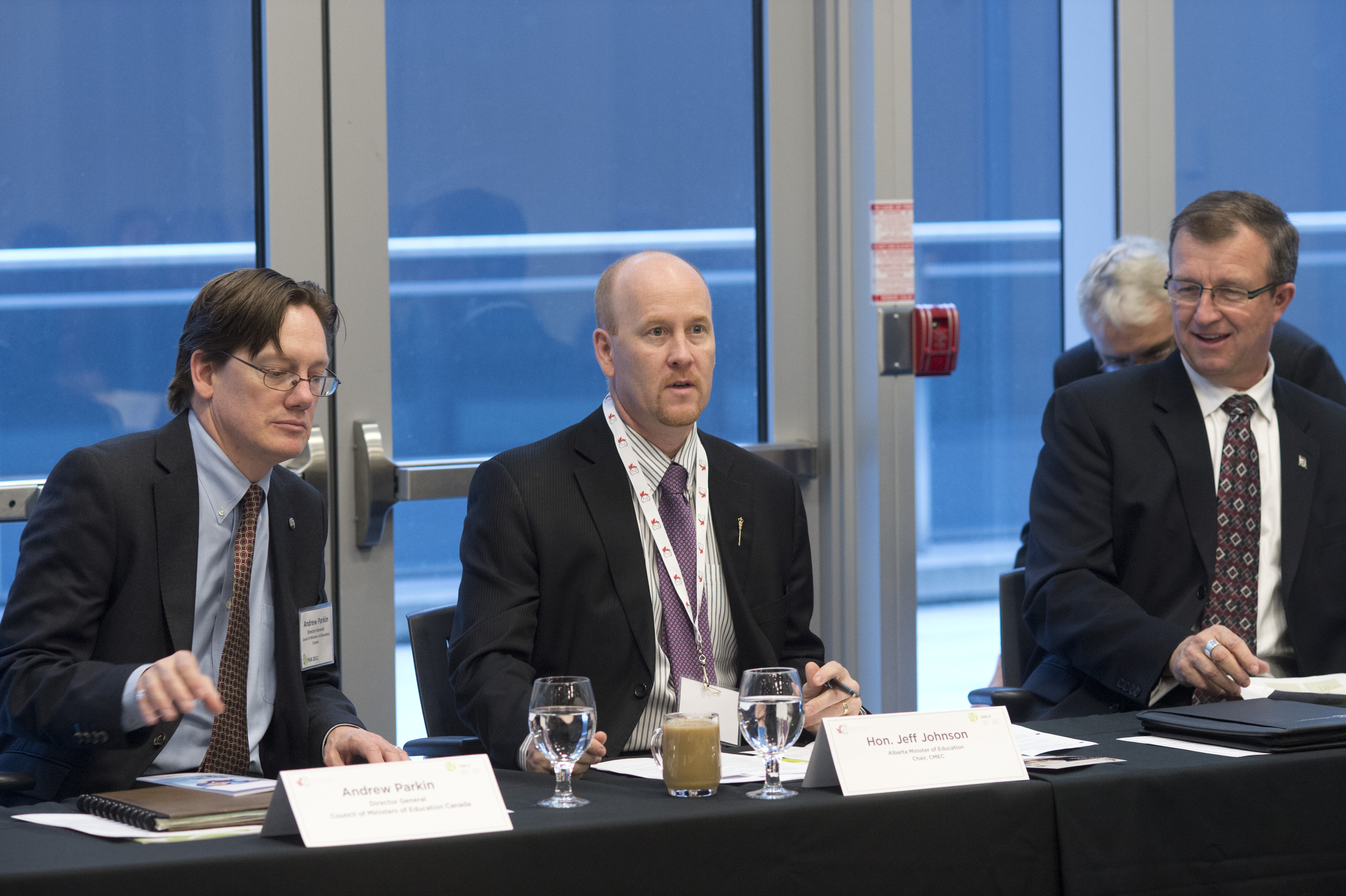



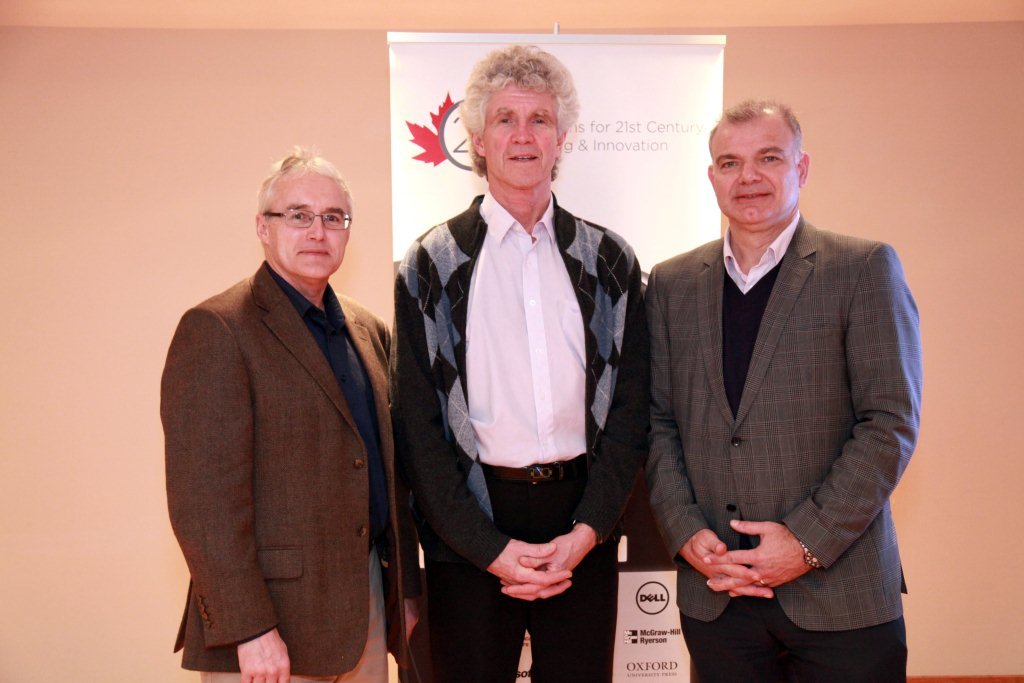
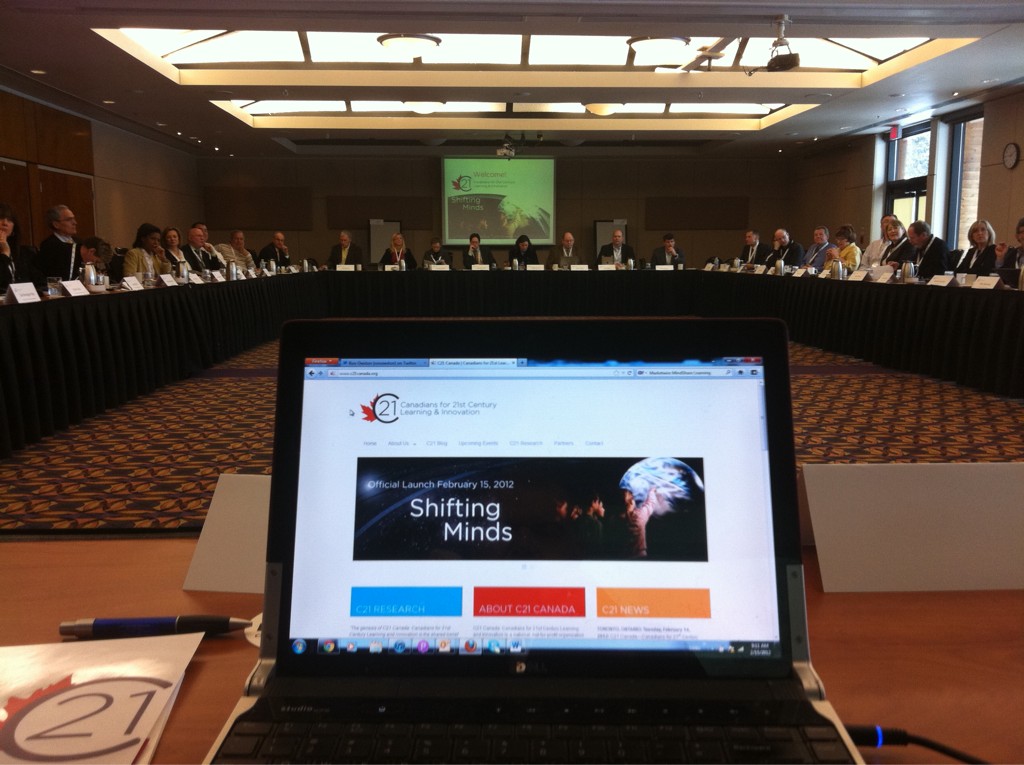






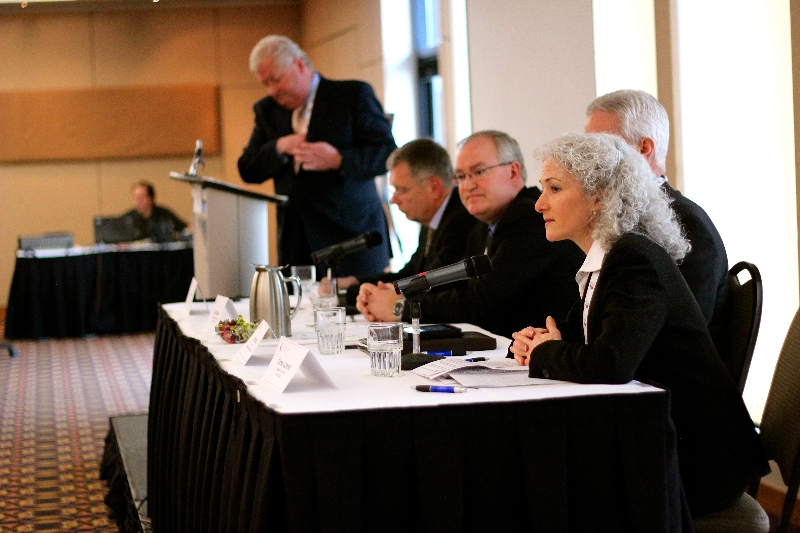
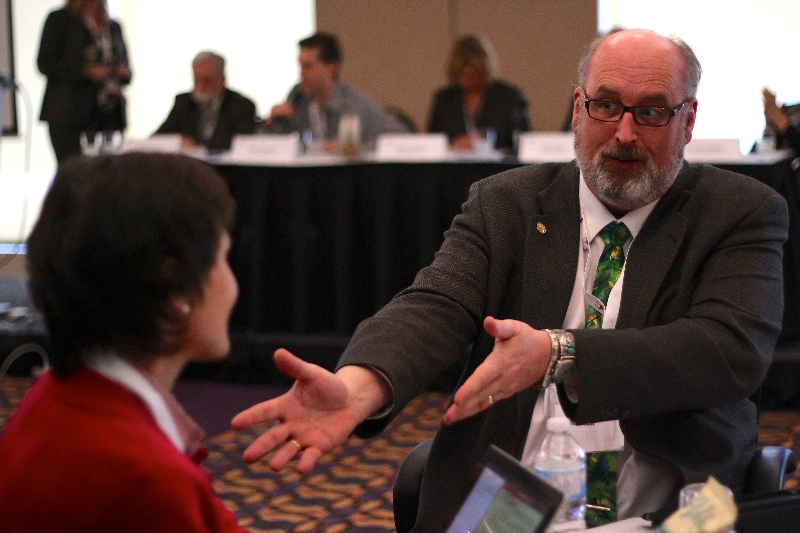
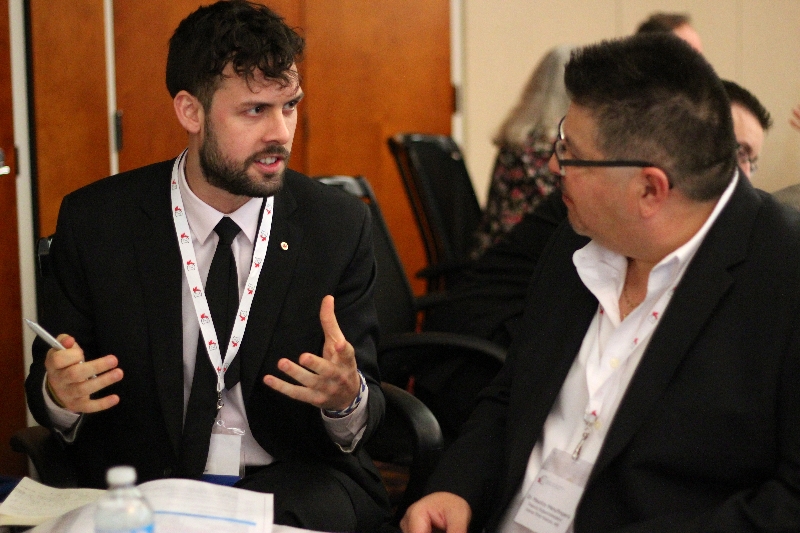





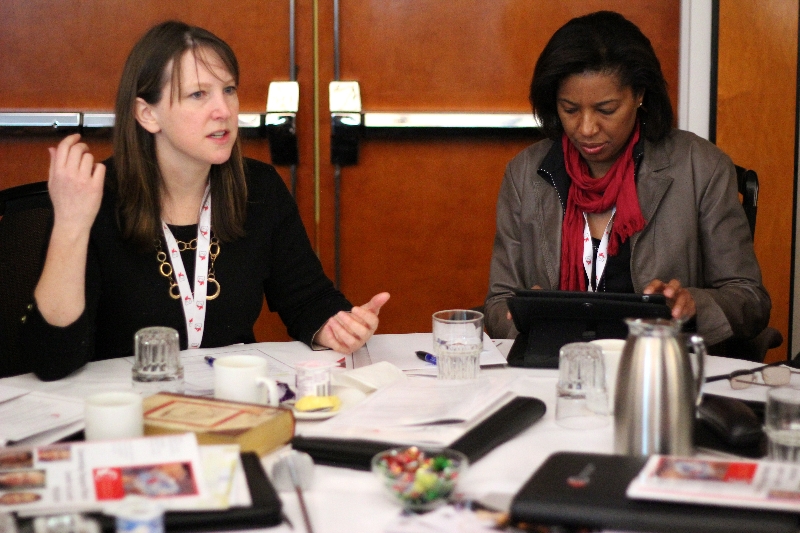






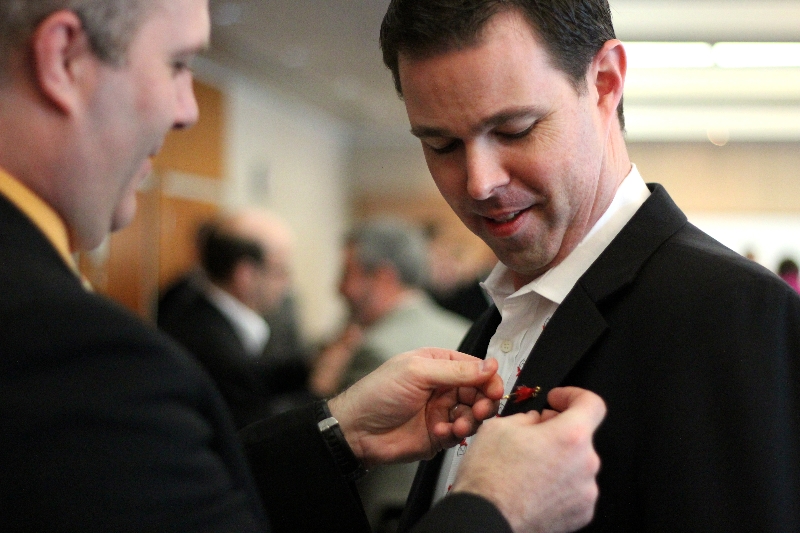
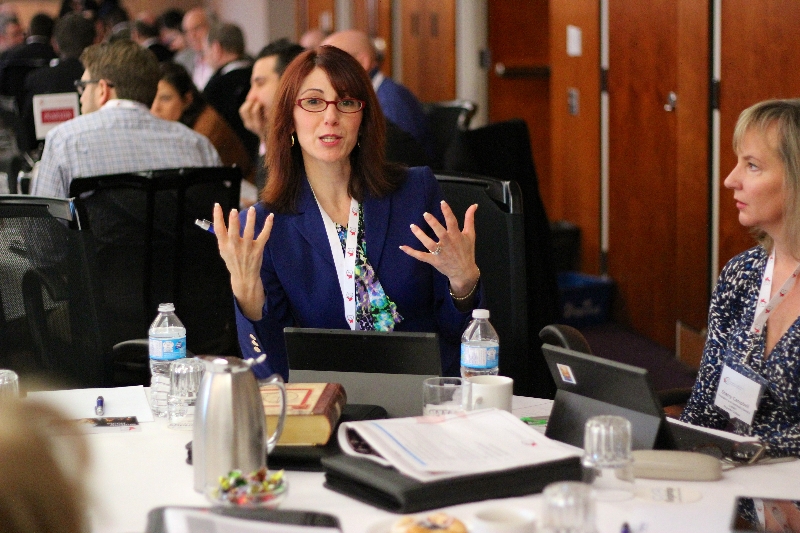
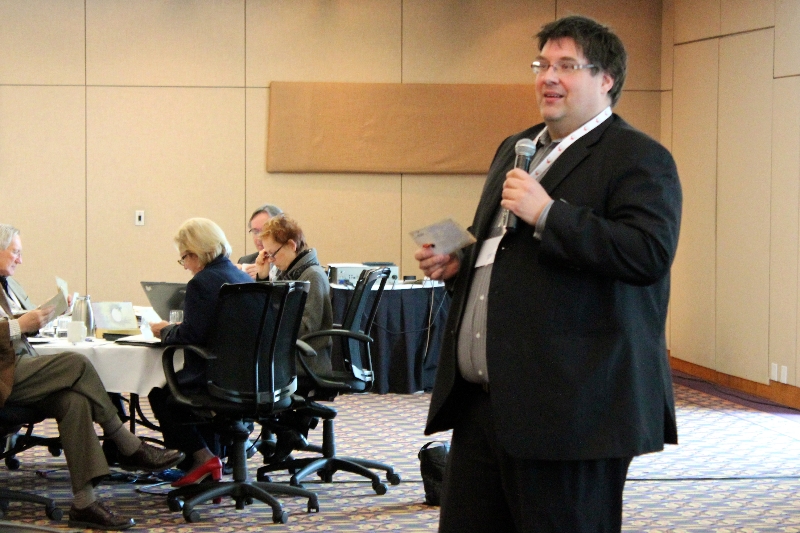
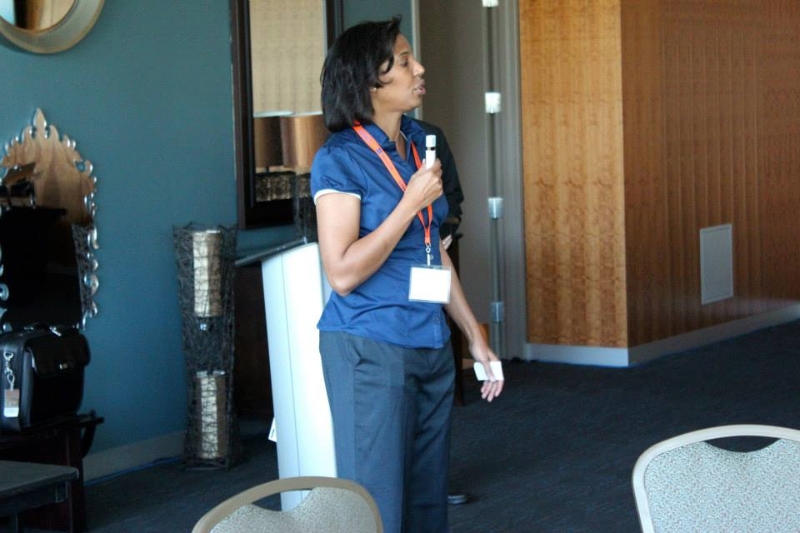

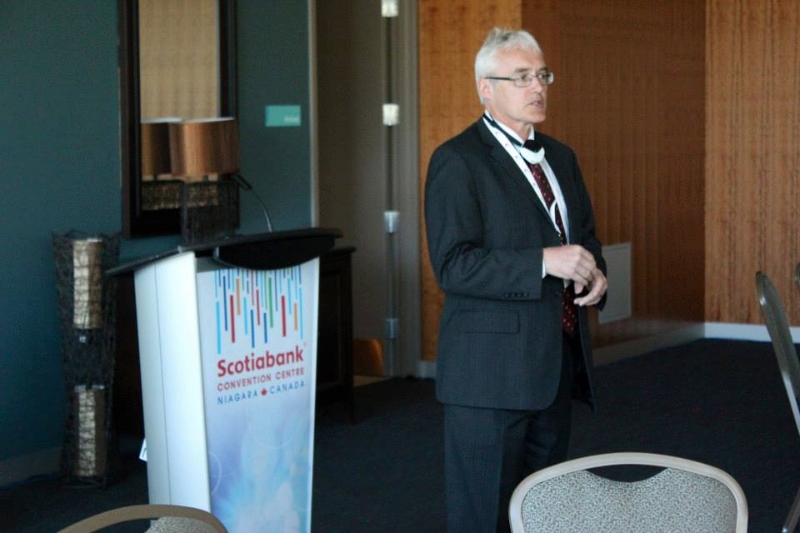
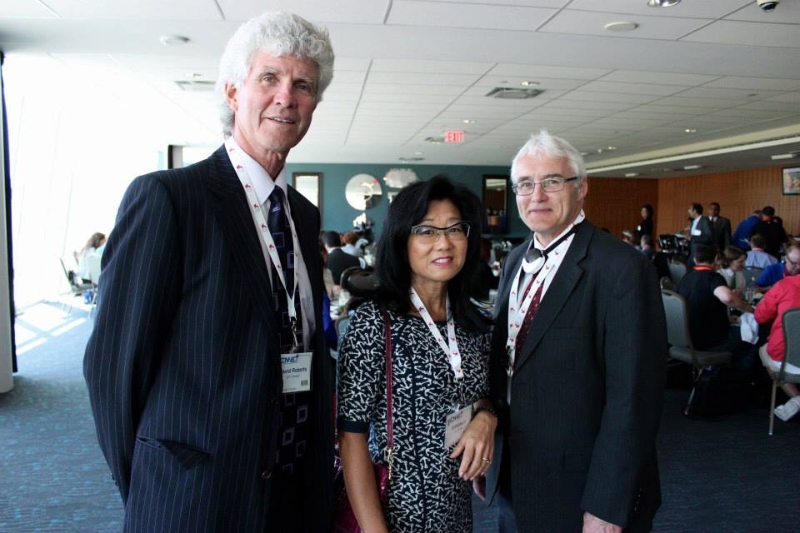


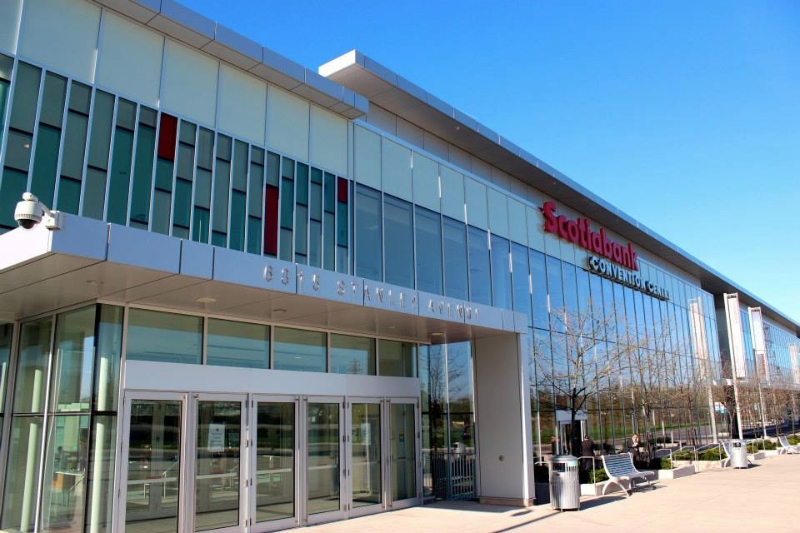



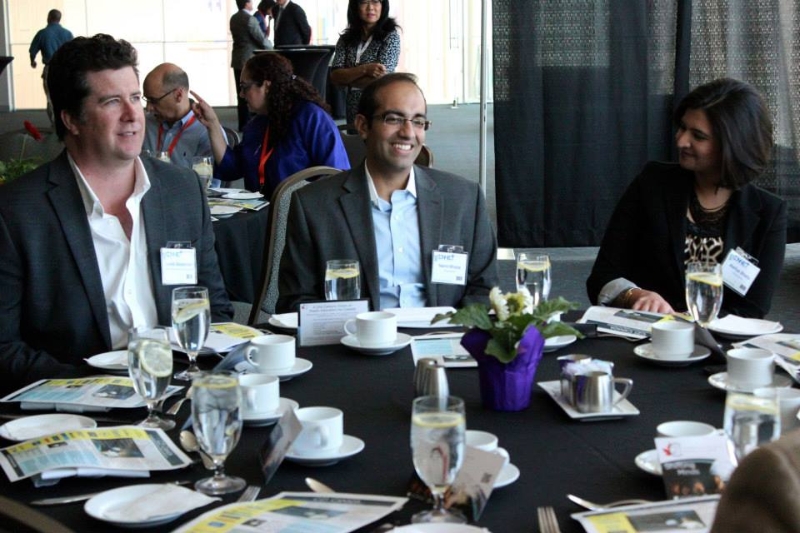

Feature Video
Recent Comments
- Kendra on Feedback
- There’s still time to get edreform right in Canada, and there’s still interest in doing so† on Changing Perspectives
- C21 Canada Interview with Naomi Johnson, Chief Superintendent of the Calgary Board of Education on Innovative educators honoured at 2nd Annual C21 Canada Summit
- sdenaultca on The Hunt for 21st Century Learning
- Tobey Steeves (@symphily) on Canada’s Skills Gap and the Federal Budget


